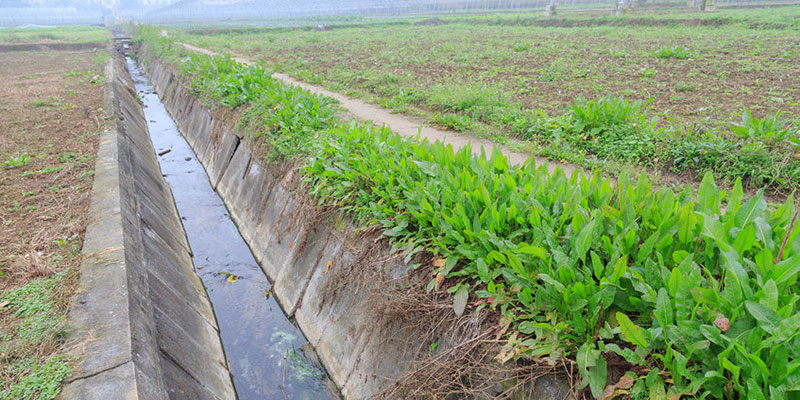When agricultural runoff is channeled into a draining ditch, it can be treated to remove dangerous nutrients.
Water pollution can come from a single source, or from a variety of sources, a difference that presents challenges in prevention
The United States Clean Water Act (CWA) of 1972 made it illegal to discharge any pollutant from a “point source” into navigable waters without a permit. What exactly is point-source pollution?
The Environmental Protection Agency describes a point source as “any single identifiable source of pollution from which pollutants are discharged, such as a pipe [or] ditch.”
The EPA’s National Pollutant Discharge Elimination System (NPDES) issues permits to control such discharges. To receive a permit, effluent from point sources must be treated with up-to-date technologies. A heightened set of controls also may be put in place to protect certain water bodies if necessary.
Individual residences with a septic system or a connection to a municipal system, or that do not discharge to surface water are exempt from the NPDES permit requirement.
However, industrial, municipal, and other types of sites must obtain permits if they discharge directly into surface waters. Permitted levels of discharged nutrients vary, at the national and sometimes local levels, but in recent years the trend has been to make such regulations stricter.
Regulating Nonpoint-Source Water Pollution
Nonpoint-source pollution is stormwater runoff that picks up contaminants from diffuse sources such pavement, buildings, and agricultural lands on its journey toward surface water bodies or aquifers. The National Ocean Service describes nonpoint-source pollution as “the greatest threat to coastal waters in the United States,” mainly because of the nutrient pollution in stormwater runoff that kills aquatic ecosystems by fueling harmful algal blooms. Yet the NPDES does not regulate it.
A landmark case in Hawaii, however, recently extended the point-source pollution protections of the CWA to groundwater, and a team of law, science, and engineering experts have proposed amending the CWA and other actions to address nonpoint-source pollution.
First, the researchers urge a mandate for states to control nonpoint-source pollution backed by federal initiatives to address it, with funding to go toward engineered solutions and natural infrastructure.
Treating Nonpoint-Source Pollution
As mentioned above, one common example of dangerous nonpoint-source pollution is runoff of nutrients, including nitrogen and phosphorus, from agriculture fields. In many areas it poses a great threat to human health, economies, and ecosystems by fueling toxic algal blooms.
Many farmers dig ditches along natural drainage paths in their fields or construct drains to consolidate runoff, effectively converting sources of nonpoint pollution into point sources that can be treated.
Fluence provides a full range of water and wastewater treatment equipment for industrial sites, communities, resorts, and other concerns.
For example, Fluence’s Aspiral™ wastewater treatment units can be deployed in agricultural areas to remove harmful nutrient concentrations from such streams. Using efficient MABR technology, the containerized plants produce an effluent that meets California Title 22 and China Class 1A standards for safe agricultural reuse.
The research team also urges an extension of the Safe Drinking Water Act to offer nonpoint-source pollution protection to more rural water sources and to educate the citizenry about taking action under existing law.
The changing legal and regulatory landscape for point and nonpoint sources of pollution in the U.S. is part of a global trend toward more water quality regulation. Fluence manufactures highly scalable, agile solutions that can be configured to address water pollution anywhere in the world. Contact Fluence — our experts are waiting to hear about your point- or nonpoint-source pollution challenges.

